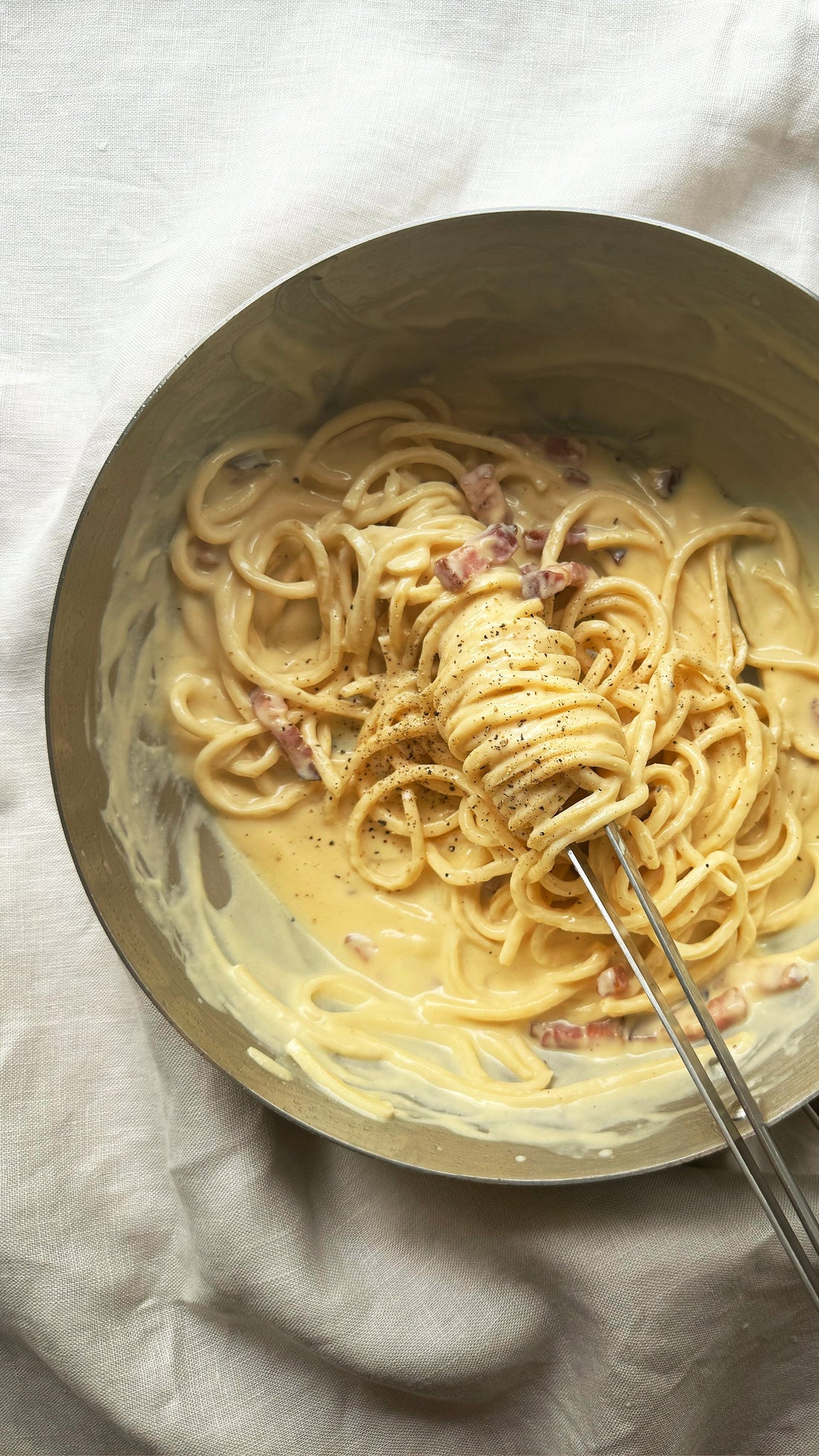Recipes
Spring Zucchini Risotto
There's something about a risotto. It keeps you honest, and humble. It forces you to slow down and focus, stirring each grain as it cooks into something delicious. For me,...
Read more...
Salmon Poke Bowl
If you love sushi, then this Sashimi-Grade Salmon Poke Bowl is about to become your new obsession. Think of it as a deconstructed sushi roll with all the freshness, flavour,...
Read more...
Maple & Sea Salt Granola
EVOO, Maple & Sea Salt Granola I fell in love with Granola when I was in NYC. It was literally everywhere, and they were all so very different. It’s amazing...
Read more...
Tagliatelle with Pork and Porcini Ragu
Tagliatelle with Pork and Porcini Ragu This take on a ragu is somewhat different and more convenient. With the use of pork sausages it does not require hours of slow...
Read more...
Sicilian Cuddureddi Biscuits
There is something about these biscuits that bring back the most wonderful memories time and time again. This is a traditional Sicilian festive biscuit, so you would always find them...
Read more...
Amaretti Biscuits
My ultimate way to use any leftover egg whites from my Rich Egg Yolk Dough recipe. These delicious biscotti come with a delicate and crunchy exterior, while maintaining a soft and...
Read more...
Braised Chicken, White Bean and Silverbeet
This is one of those one-pot wonders that once put together you can simply walk away and let the oven do the work for you. Serves 4 | Cooking Time...
Read more...
Torta di Mele (Italian Apple Cake)
This Torta di Mele is simple, light and a definite crowd pleaser. No equipment required other than a bowl and a spatula.
Read more...
Summer Heirloom Tomato Salad with Peaches, Burrata and Rose Balsamic
This heirloom tomato salad with burrata is the perfect embodiment of summer on a plate.
Read more...
Pumpkin, Orange and Parmesan Risotto
Like sunshine on a plate, this risotto really is the perfect blend of sweet, savoury and acidity.
Read more...
Pasta Carbonara
Creamy, indulgent perfection. Let's dive into how I create this Roman classic.
Read more...
Semolina Pasta Dough
With just two ingredients – semolina and water – it certainly goes a long way to take notice of your quantities.
Read more...
.article__image,
.blog-post-featured-image {
max-height: 400px; /* adjust as you like */
width: auto;
object-fit: cover; /* keeps aspect ratio and crops nicely */
}











